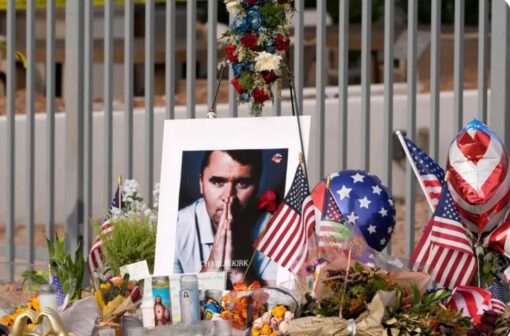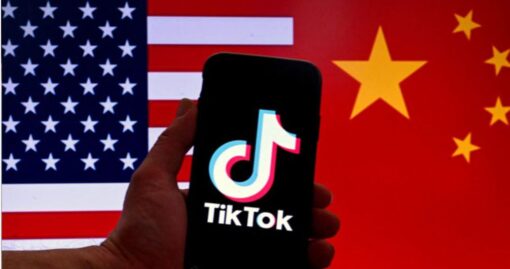The latest move by Donald Trump has thrown American politics into sharp contention once again as the president signed a sweeping memorandum on what he termed the threat of leftwing domestic terrorism.
The directive, framed as a comprehensive strategy to dismantle networks of political violence, has ignited immediate outrage among civil liberties groups, activists, and constitutional scholars who warn that the administration is dangerously expanding the definition of terrorism to encompass dissent and protest.
The Trump domestic terrorism memo, unveiled in a White House ceremony, comes against the backdrop of heightened political polarization and a series of violent incidents that the president and his allies have sought to tie directly to the radical left.
At the signing, Trump presented the memorandum as a historic step to safeguard the country against what he described as “professional anarchists and agitators.” He said, “these are anarchists and agitators, professional anarchists and agitators, and they get hired by wealthy people, some of whom I know. You wouldn’t know at dinner with them.
Everything’s nice, and then you find out that they funded millions of dollars to these lunatics.” By pointing to unnamed “funders” he claimed were fueling unrest, the president created further uncertainty over who might be targeted.

While he hinted at billionaires such as George Soros and Reid Hoffman, he remained vague, leaving critics fearful that the memorandum is designed as a political weapon rather than a neutral security tool.
The Trump domestic terrorism strategy calls for coordination across federal agencies, including the Department of Justice, the FBI’s joint terrorism task forces, and the Treasury Department, to identify and dismantle organized structures allegedly behind political violence.
In Trump’s words, “This is the first time in American history that there is an all-of-government effort to dismantle leftwing terrorism.” His aides echoed this language, with senior adviser Stephen Miller calling the initiative “historic and significant,” asserting that entire networks of feeder organizations were behind harassment, doxing, intimidation, and even assassination attempts.
Civil liberties groups were quick to condemn the order. Hina Shamsi, director of the ACLU’s National Security Project, said in a statement, “after one of the most harrowing weeks for our First Amendment rights, the president is invoking political violence, which we all condemn, as an excuse to target non-profits and activists with the false and stigmatizing label of ‘domestic terrorism’.
This is a shameful and dangerous move.” Critics pointed out that terrorism task forces already have a history of disproportionately targeting communities of color, protesters, and activists.
The fear is that the Trump domestic terrorism memo will further entrench this practice, putting constitutionally protected activity under federal investigation.
Legal experts also questioned the significance of the memorandum. Daniel Richman, a professor at Columbia Law School, explained that it carries little legal weight since the president cannot create new crimes through executive action.
“You can’t by executive order create new crimes. This does not create new crimes,” he said. “The concern is that this administration has made clear it is only interested in pursuing politically oriented terrorism that disagrees with its political agenda.”
He added that laws already on the books give the government power to prosecute violent conspiracies, meaning the directive may function more as a political statement than a substantive legal shift.
Still, activists are wary of how far the administration might go. Jason Charter, who faced charges in Trump’s first term after attempting to take down a statue outside the White House, voiced concern:
“Antifa is antifascism, and antifascism is a very widely shared thing, and being against fascism should not be illegal. It’s trying to slap terrorism charges on people doing protected activities under the Bill of Rights.”
His comments underscored fears that the label of domestic terrorism could be applied to movements that challenge the government rather than to actual violent plots.
The memorandum was introduced in the wake of recent violent incidents, including the killing of right-wing pundit Charlie Kirk earlier in September and a deadly attack on a US Immigration and Customs Enforcement facility in Dallas.
Trump linked these events to what he called a coordinated campaign by radical leftists, even though investigators said the Dallas suspect was not tied to any specific group.
On his Truth Social platform, Trump declared, “this violence is the result of the radical left Democrats constantly demonizing law enforcement, calling for ICE to be demolished, and comparing ICE Officers to Nazis.

The continuing violence from Radical Left Terrorists, in the aftermath of Charlie Kirk’s assassination, must be stopped.” By tying the incidents directly to his political opponents, the president amplified accusations that the memo is as much about electoral politics as public safety.
Supporters of the president praised the move as a necessary defense against threats they believe have been underestimated. Miller described the initiative as “terrorism on our soil” and promised the full force of government to uproot the organizations behind it.
To his supporters, the Trump domestic terrorism policy signals strong leadership against disorder at a time when anxieties about violence and instability are rising. They argue that ignoring the threat from leftwing extremists would amount to negligence.
Opponents, however, contend that Trump is deliberately ignoring the significant number of attacks carried out by rightwing extremists in recent years.
They argue that by narrowing the scope to leftwing violence, the administration is weaponizing counterterrorism infrastructure to go after its critics while overlooking threats that do not fit its political narrative. In the words of one activist, “This is not about safety. It’s about silencing dissent.”
The directive also lumped together a series of unrelated incidents stretching back years, including the foiled 2022 assassination attempt on a Supreme Court justice and two previous failed attempts on Trump’s own life.
By compiling disparate acts under the banner of domestic terrorism, the memorandum paints a picture of a coordinated network that critics argue does not exist. Shamsi of the ACLU warned that intimidation tactics against human rights advocates are not new, recalling how civil rights leaders were historically branded as threats to national security.
“In an earlier era, civil rights movement leaders were also labeled security threats and investigated, monitored, threatened, and even arrested,” she said, drawing a direct line between past abuses and today’s policies.
Beyond the legal and political dimensions, the Trump domestic terrorism memo intensifies the cultural divide in the United States. For supporters, it reinforces a sense of urgency in combating a shadowy network of leftist agitators.
For detractors, it symbolizes authoritarian overreach, a chilling attempt to criminalize protest and dissent. As with many of Trump’s actions, the symbolism may matter as much as the substance, galvanizing his base while deepening mistrust among his opponents.
Whether the memorandum will withstand legal challenges remains uncertain. Courts have previously struck down executive actions that attempted to stretch presidential power beyond statutory limits.
Yet even if challenged successfully, the rhetoric surrounding the directive may achieve the president’s goals by shaping the political conversation, intimidating activists, and framing his opponents as enemies of the state. The long-term impact may not lie in prosecutions but in the atmosphere of fear and polarization it creates.
In the days following the announcement, protests erupted in several cities, with demonstrators carrying signs declaring “Dissent is not terrorism” and “Stop political repression.”
Advocacy groups promised to resist what they called a dangerous slide toward authoritarianism, while Trump supporters celebrated the decision as long overdue. The clash of narratives reflects a broader struggle over the meaning of democracy itself and whether opposition to those in power can be recast as a threat to national security.
As America heads deeper into a contentious election season, the Trump domestic terrorism memo will likely remain a flashpoint, shaping debates over security, liberty, and the future of dissent.
The memorandum may not create new crimes, but it has already created new lines of battle in a nation increasingly defined by political confrontation.


